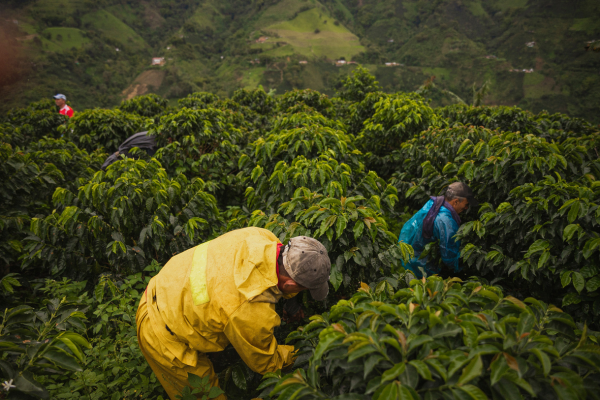Every delicious cup of coffee begins with quality beans. But what about the bag or container they come in? For too long, coffee packaging has been an afterthought. It often contributes significantly to environmental waste.
As consumers become more aware, the demand for eco-friendly coffee packaging is growing. This shift reflects a deeper understanding of coffee’s journey. It moves beyond just the bean itself. It considers its entire lifecycle, from farm to disposal.
Navigating the world of sustainable packaging can be complex. There are many terms and claims. This guide will help you understand the options. It will empower you to make more informed, environmentally conscious choices with every coffee purchase.
The Environmental Challenge of Traditional Coffee Packaging
Conventional coffee packaging poses significant environmental problems. Most coffee bags are made from multi-layer materials. These often combine plastic, aluminum, and sometimes paper. This complex structure makes them difficult, if not impossible, to recycle.
These non-recyclable bags typically end up in landfills. There, they can take hundreds of years to decompose. During this time, they contribute to pollution. They also release greenhouse gases as they slowly break down.
The production of these materials also has an environmental footprint. It consumes energy and resources. It can also generate pollutants. The entire lifecycle, from creation to disposal, is energy-intensive.
Single-serve coffee pods, while convenient, amplify the problem. They generate a vast amount of plastic and aluminum waste. Many pods are not easily recyclable. This adds to the global waste crisis.
Recognizing these issues is the first step. The coffee industry is now seeking innovative solutions. They aim to reduce their packaging’s environmental impact. This requires rethinking traditional materials and designs.
Understanding Key Terms in Sustainable Packaging
Before diving into specific options, let’s clarify some common terms. These terms are often used interchangeably. But they have distinct meanings in the world of eco-friendly packaging.
Recyclable
A material is recyclable if it can be collected and reprocessed. It is then transformed into new products. However, recyclability depends on local infrastructure. What’s recyclable in one area might not be in another.
Coffee packaging is challenging because of its multi-layer structure. Even if individual layers are recyclable, separating them is hard. This often makes the final product non-recyclable. Look for clear recycling instructions on packaging.
Compostable
Compostable materials break down into natural elements. This happens in a composting environment. They return nutrients to the earth. This process leaves no toxic residues behind.
Compostable packaging can be either industrially (commercial) compostable or home compostable. Industrial composting requires specific conditions. These include high temperatures and specialized facilities. Home composting is slower and happens at ambient temperatures.
Always check if a compostable bag is certified. Look for certifications like BPI (Biodegradable Products Institute). This ensures it meets the necessary standards for breakdown.
Biodegradable
Biodegradable means a material can break down naturally. This process is usually aided by microorganisms. However, this term is less strict than “compostable.” It doesn’t specify a timeframe or final residue.
Almost everything is technically biodegradable over a very long time. This includes conventional plastics. So, “biodegradable” alone doesn’t guarantee environmental benefit. Look for “compostable” for a stronger eco-friendly claim.
Post-Consumer Recycled (PCR) Content
PCR content means the packaging is made from recycled materials. These materials have already been used by consumers. Using PCR reduces the need for virgin resources. It also diverts waste from landfills.
PCR packaging is a great step towards a circular economy. It gives new life to existing materials. This reduces the overall environmental footprint. It’s an efficient use of resources.
Innovative Eco-Friendly Packaging Options for Coffee
The coffee industry is experimenting with various sustainable materials. Each option has its advantages and challenges. The goal is to balance protection, shelf life, and environmental impact.
Compostable Bags
These are designed to break down in composting facilities. They are often made from plant-based materials like PLA (polylactic acid). PLA is derived from renewable resources like corn starch.
Some advanced compostable bags use bio-based polymers. These mimic the barrier properties of traditional plastic. This helps keep coffee fresh. Look for certifications to ensure true compostability.
Pros: Reduces landfill waste, returns nutrients to the soil. Cons: Requires access to commercial composting facilities (often limited). Home composting is challenging for many types.
Recyclable Bags (Mono-Material)
The biggest hurdle for recycling coffee bags is multi-layer construction. To overcome this, some brands are developing mono-material bags. These are made from a single type of plastic. This could be polyethylene (PE) or polypropylene (PP).
Because they are made from one material, they are theoretically easier to recycle. They can be sorted and processed by existing recycling infrastructure. This requires less energy than breaking down mixed materials.
Pros: Easier to recycle where infrastructure exists, reduces reliance on virgin plastics. Cons: Still plastic, relies on consumer recycling behavior. Recycling infrastructure varies widely.
Bags with Post-Consumer Recycled (PCR) Content
These bags are a step in the right direction. They are made partly or entirely from recycled plastic. This gives plastic a second life. It reduces the demand for new petroleum-based plastics.
PCR content can be integrated into various types of bags. This includes flexible pouches and stand-up bags. It’s a way to use existing resources more efficiently. It promotes a circular economy model.
Pros: Reduces virgin plastic use, diverts waste from landfills. Cons: Still contains plastic, not always recyclable at the end of its life.
Bioplastics and Bio-Based Plastics
Bioplastics are a broad category. They are plastics derived from renewable biomass sources. Examples include corn starch, sugarcane, or cellulose. They are an alternative to fossil fuel-based plastics.
Some bioplastics are compostable (like PLA). Others are not. It’s important to differentiate. “Bio-based” doesn’t automatically mean biodegradable or compostable.
Pros: Reduces reliance on fossil fuels, some can be composted. Cons: Can be confusing for consumers, not all are compostable, may compete with food crops.
Glass Jars and Metal Tins (Reusable/Refillable)
These are traditional options making a comeback. Glass jars and metal tins are highly recyclable. More importantly, they are excellent for refill programs.
Consumers can buy coffee in bulk. They can then refill their own containers. This eliminates the need for new packaging with every purchase. It’s a truly zero-waste approach.
Pros: Highly recyclable, excellent for reuse/refill models, great barrier properties for freshness. Cons: Heavier to transport (higher carbon footprint for shipping), fragile (glass).
Coffee Pods: Recyclable and Compostable Innovations
Single-serve coffee pods faced major criticism for waste. The industry is responding with innovations.
Recyclable pods are now available. They are often made from aluminum or specific plastics. These can be recycled if separated from coffee grounds. Some brands offer collection programs.
Compostable pods are also emerging. They are made from plant-based materials. They are designed to break down in industrial composting facilities. This significantly reduces their environmental impact.
Pros: Reduces waste from traditional pods, convenient. Cons: Recycling/composting infrastructure still needed, higher energy use per cup than drip.
What to Look for When Buying Sustainable Coffee Packaging
Making eco-conscious choices requires a keen eye. Don’t just trust vague “green” claims. Look for specific certifications and detailed information.
- Certifications: Seek out recognized third-party certifications. For compostability, look for BPI (US), EN 13432 (Europe), or AS 4736 (Australia). For general sustainability, look for Rainforest Alliance or Fair Trade labels, which sometimes include packaging criteria.
- Clear Instructions: Does the packaging clearly state how to dispose of it? Look for labels like “Recycle with plastics,” “Compost where facilities exist,” or “Return to store for refill.”
- Mono-Material Labels: If it’s a flexible bag, does it explicitly state “mono-material” and which type of plastic (e.g., “100% PE Recyclable”)?
- Post-Consumer Recycled Content: Look for percentages of PCR plastic used (e.g., “Made with 30% PCR plastic”).
- Brand Transparency: Does the brand’s website provide detailed information about their packaging strategy? Do they admit challenges? This shows a genuine commitment.
- Refill Programs: See if your local coffee shop or roaster offers bulk coffee. Bring your own reusable container to fill up. This is often the most sustainable option.
- Avoid Unnecessary Layers: Some coffee packaging might include extra layers or components that aren’t necessary. Simpler designs are generally better for the environment.
- Consider Transportation Impact: While not strictly about the packaging material, a lighter package generally means lower shipping emissions. This is a subtle but important factor.
The Role of Consumers in Driving Change
As a coffee consumer, your purchasing power is immense. Every time you choose a product, you’re voting for its production methods. By consciously selecting coffee with sustainable packaging, you send a clear message to brands.
Demand transparency from companies. Ask questions on social media or directly contact brands. Let them know that eco-friendly packaging matters to you. Consumer pressure can drive innovation and adoption of better practices.
Support brands that are investing in sustainable solutions. This includes those experimenting with new materials. It also applies to companies offering refill options. Your financial support encourages their efforts.
Recycle or compost properly when possible. Even the most sustainable packaging only works if disposed of correctly. Understand your local recycling rules. Participate in composting programs if available.
Share your knowledge with others. Educate friends and family about the importance of sustainable coffee packaging. Encourage them to make informed choices too. Collective action has a powerful ripple effect.
The Future of Coffee Packaging: Towards a Circular Economy
The future of coffee packaging is moving towards a circular economy model. This approach aims to eliminate waste. It keeps resources in use for as long as possible. It means designing out waste and pollution.
This involves rethinking packaging from the ground up. It means designing for reuse, repair, and recycling. It focuses on using materials that can be continuously cycled.
Innovations will continue in bio-based and truly compostable materials. Research is ongoing for better barrier properties. These are crucial for keeping coffee fresh.
Refill and returnable systems are expected to expand. Local coffee shops and larger retailers may offer more options. This minimizes single-use packaging.
The industry will also focus on reducing packaging overall. This means optimizing package size and weight. It also involves exploring concentrate or dissolvable coffee forms.
The journey to truly sustainable coffee packaging is complex. But the momentum is building. It’s a collaborative effort involving brands, innovators, and consumers.
Considerations Finals
The packaging your coffee comes in is a critical, yet often overlooked, part of its environmental story.
Traditional multi-layer bags contribute significantly to landfill waste. However, the coffee industry is now actively seeking and implementing more sustainable solutions.
By understanding the nuances of terms like recyclable, compostable, and biodegradable, and by recognizing the different eco-friendly packaging options available—from mono-material bags and PCR content to glass jars and innovative pods—you can make a significant difference.
Your conscious choice supports a greener planet, encourages industry innovation, and closes the loop towards a more circular economy in coffee. Choose wisely, dispose thoughtfully, and make every sip contribute to a more sustainable future.

